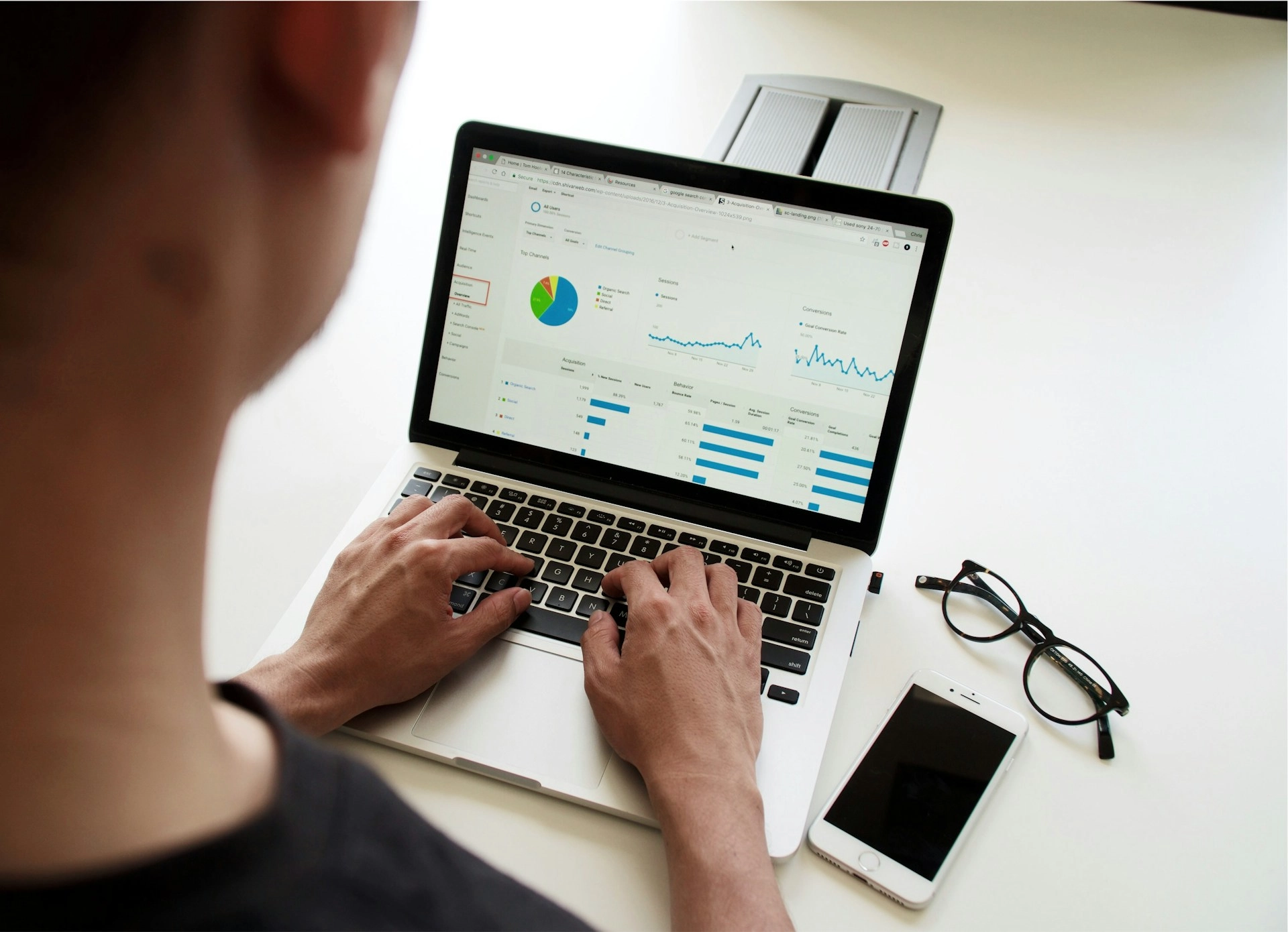In a nutshell:
- Business intelligence (BI) focuses on analyzing historical and current data to understand past performance and make informed decisions.
- Predictive analytics uses advanced statistical models and machine learning algorithms to forecast future trends and outcomes.
- BI helps evaluate past strategies and optimize future performance, while predictive analytics enables proactive decision-making and staying ahead of the competition.
- Predictive analytics offers advantages over BI by providing insights into future trends, optimizing resource allocation, and driving growth.
- Leveraging both BI and predictive analytics can provide comprehensive insights and strategic advantage in the competitive business landscape.
Putting "intelligence" in the name of anything sure makes it sound appealing, doesn't it? Business intelligence, or BI, has established itself as a necessary discipline in data-driven organizations. But predictive analytics also is built on intelligence — artificial intelligence.
In reality, smart, forward-looking businesses are using both of these methods of working with data today.
Both BI and predictive analytics improve companies' ability to derive insights and make informed decisions, creating a major competitive edge. Data analysts rely on a range of techniques and tools to gain valuable information from their data.
Let’s shed some light on the characteristics and applications of both BI and predictive analytics to determine which is the right toolkit for your team.
-

- Photo by UX Indonesia on Unsplash
Understanding Business Intelligence
Business intelligence can be defined as the process of gathering, analyzing, and interpreting data to generate actionable insights that drive strategic decision-making. It involves using various tools, technologies, and methodologies to extract valuable information from structured and unstructured data sources.
One of the critical characteristics of BI is its focus on historical and current data. Unlike predictive analytics, which aims to forecast future trends, BI primarily deals with retrospective analysis. It helps businesses understand past performance, identify patterns, and uncover trends that can shape future strategies.
BI has a wide range of applications and use cases across different industries.
Sales and Marketing
One common use case is sales and marketing, where teams use BI tools to analyze customer behavior, track sales performance, and optimize marketing campaigns. By processing customer data, companies can identify target segments, personalize marketing messages, and improve customer acquisition and retention.
Finance and Accounting
BI tools enable organizations to track financial performance, monitor cash flows, and generate financial reports. With real-time access to financial data, businesses can make informed budgeting and risk management decisions.
Supply Chain Management
Supply chain management is another domain where BI plays a vital role. By collecting and analyzing data related to inventory levels, production rates, and supplier performance, companies can optimize their supply chain processes, reduce costs, and improve overall operational efficiency and demand planning KPIs.
BI is highly valuable for retrospective analysis as it provides insights into past performance, trends, and patterns. By analyzing historical data, organizations can identify what worked well and what didn't. This enables them to make data-driven decisions that drive future operations.
Retrospective analysis through BI allows businesses to evaluate the success of past strategies, campaigns, and initiatives. By analyzing data on sales, customer feedback, and market trends, organizations can identify areas of improvement and make informed decisions to optimize future performance.
Exploring Predictive Analytics
Predictive analytics is the practice of extracting insights from data to predict future events or behaviors. It involves analyzing historical and current data patterns, identifying correlations, and building models that can be used to forecast future outcomes.
A key feature of predictive analytics tools is their ability to process large volumes of data from various sources. By integrating data from structured and unstructured sources, organizations can gain a comprehensive understanding of the factors influencing future outcomes.
Another essential feature of predictive analytics is its emphasis on statistical modeling and machine learning algorithms. These techniques enable organizations to uncover hidden patterns, relationships, and trends within the data, allowing for accurate predictions.
Predictive analytics has numerous applications and use cases across different industries. Similar to BI, it can help companies with sales, marketing, finances, and supply chain management.
Predictive analytics enables organizations to make informed decisions and take a proactive approach to operations by providing organizations with insights into future trends and outcomes. Businesses can use predictive analytics to identify emerging market trends, anticipate customer needs, and stay ahead of the competition.
Predictive analytics also helps organizations optimize their resource allocation and operational efficiency. By accurately forecasting demand and supply, businesses can reduce costs, minimize wastage, and streamline their operations.
-

- Photo by Campaign Creators on Unsplash
Contrasting BI and Predictive Analytics
While Business Intelligence (BI) and Predictive Analytics are both essential components of data analysis, they differ in several key aspects. They include:
Data Usage and Analysis Methods
BI primarily focuses on extracting insights from historical and current data. It involves collecting, organizing, and analyzing data from various sources to generate reports, dashboards, and visualizations. The analysis methods used in BI involve descriptive analytics, which aims to understand what has happened in the past while evaluating the current state of affairs.
On the other hand, predictive analytics goes beyond historical data and utilizes advanced statistical models and machine learning algorithms to forecast future outcomes. It involves analyzing historical data patterns and building models that can predict future events or behaviors.
Predictive analytics employs techniques such as regression analysis, decision trees, and neural networks to uncover hidden patterns and make accurate predictions.
Focus on Historical vs. Future Data
BI focuses on retrospective analysis, providing insights into past performance and trends. It helps organizations understand what has happened and why, enabling them to learn from past experiences and make informed decisions based on historical data.
In contrast, predictive analytics is future-oriented. It uses historical and current data to make predictions about future trends, behaviors, and outcomes. By analyzing patterns and relationships within the data, predictive analytics enables organizations to anticipate upcoming events.
Business Implications and Decision-Making Support
BI helps organizations evaluate past strategies' success, identify improvement areas, and optimize future performance. BI supports informed decision-making based on historical data by providing stakeholders with real-time access to critical information.
Predictive analytics, on the other hand, has significant implications for future-oriented strategies. By forecasting future trends and outcomes, organizations can make proactive decisions and stay ahead of the competition. Predictive analytics enables businesses to identify emerging market trends, anticipate customer needs, and optimize resource allocation for future success.
-

- Photo by Towfiqu barbhuiya on Unsplash
Which is Better, Business Intelligence or Predictive Analytics?
Business intelligence and data analytics are two different disciplines that serve different purposes. But overall, predictive analytics offers several advantages over traditional business intelligence (BI) when enhancing strategic decision-making. It goes beyond historical data analysis and empowers organizations to make data-driven decisions based on future insights.
By forecasting new trends and outcomes, predictive analytics enables businesses to develop proactive strategies, identify potential risks and opportunities, and stay ahead in a rapidly changing market.
By leveraging advanced statistical models and machine learning algorithms, predictive analytics uncovers hidden patterns and relationships within the data. This allows organizations to accurately predict customer behavior, market trends, and other key factors influencing business performance. With this foresight, decision-makers can anticipate customer needs, optimize resource allocation, and drive growth and profitability.
Considerations for Data Professionals
Not all businesses have the same data requirements or goals. Data professionals must carefully evaluate their organization's specific needs and choose the appropriate predictive analytics approach. This includes selecting the right statistical models, machine learning algorithms, and data sources that align with the business objectives.
Data professionals should also consider the scalability and flexibility of the chosen approach. As data volumes and complexity increase, the chosen predictive analytics solution should be able to handle the growing demands and adapt to changing business needs.
The quality of predictive analytics software can significantly impact the decision-making process. Companies must pay close attention to the tools they choose for gathering data and sourcing the necessary insights. A complex tool without sufficient functionality could let important data slip through the cracks.
Teams dealing with data analytics should ensure they have the necessary skills and expertise to implement predictive analytics effectively. This may involve acquiring knowledge in statistical modeling, machine learning, and data visualization techniques.
Leveraging Predictive Analytics and Business Intelligence
While both BI and predictive analytics provide valuable insights to businesses, they serve different purposes. BI aids in understanding past performance and making informed decisions, while predictive analytics provides foresight into the future to anticipate developments and formulate strategies accordingly. In essence, BI is part of the comprehensive predictive analytics approach.
Depending on specific business needs, leveraging both can provide more comprehensive insights, drive informed decision-making, and lead to strategic advantage in the competitive business landscape.
This synergistic integration enables organizations to establish a comprehensive analytical framework that spans from understanding historical patterns to anticipating and strategically preparing for future trends.
Ready to maximize the benefits of this dual approach by investing in a high-quality predictive analytics solution? Get in touch with us today to explore what Pecan can offer your team.



